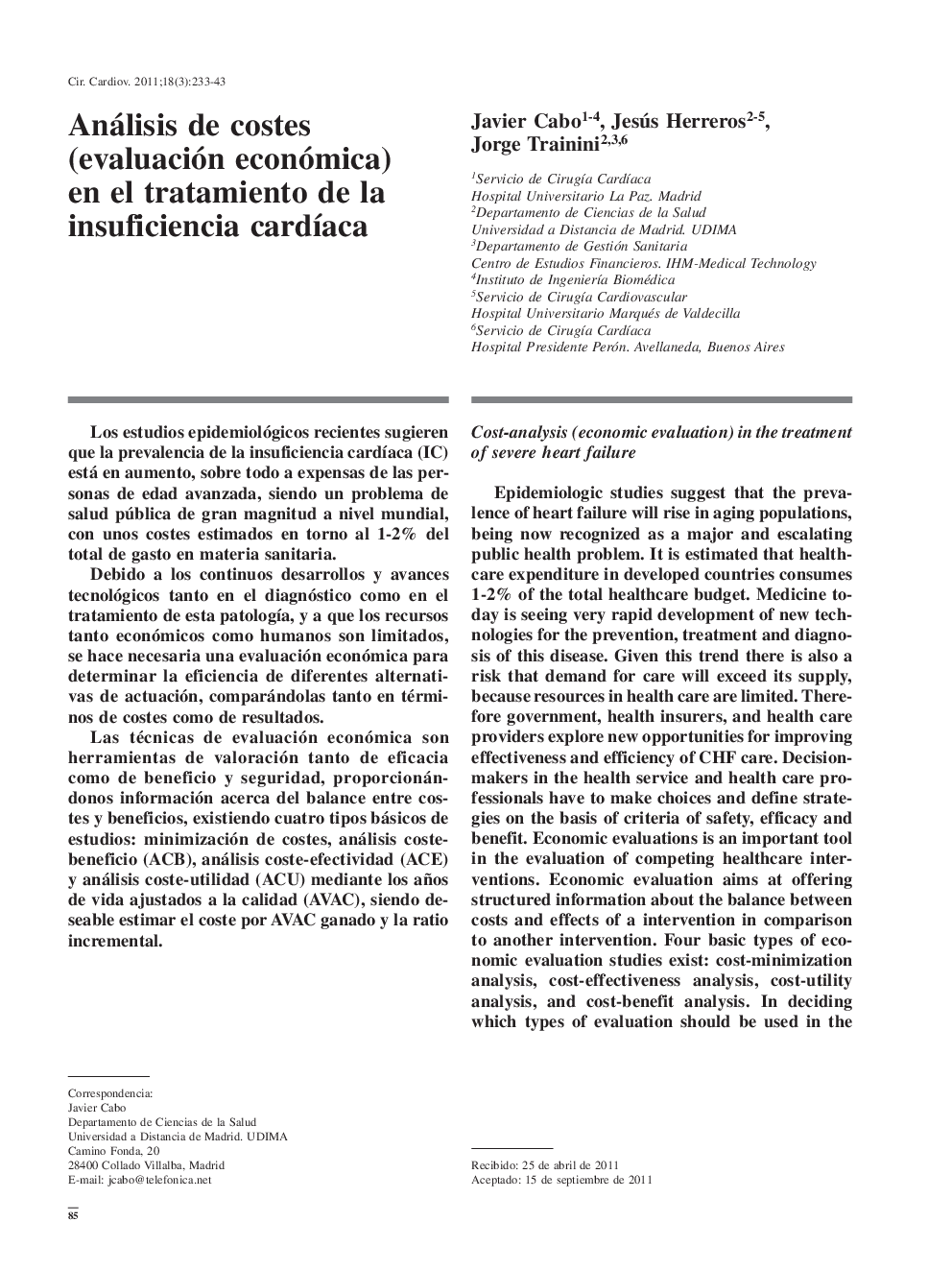| Article ID | Journal | Published Year | Pages | File Type |
|---|---|---|---|---|
| 2907860 | Cirugía Cardiovascular | 2011 | 11 Pages |
Los estudios epidemiológicos recientes sugieren que la prevalencia de la insuficiencia cardíaca (IC) está en aumento, sobre todo a expensas de las personas de edad avanzada, siendo un problema de salud pública de gran magnitud a nivel mundial, con unos costes estimados en torno al 1–2% del total de gasto en materia sanitaria.Debido a los continuos desarrollos y avances tecnológicos tanto en el diagnóstico como en el tratamiento de esta patología, y a que los recursos tanto económicos como humanos son limitados, se hace necesaria una evaluación económica para determinar la eficiencia de diferentes alternativas de actuación, comparándolas tanto en términos de costes como de resultados.Las técnicas de evaluación económica son herramientas de valoración tanto de eficacia como de beneficio y seguridad, proporcionándonos información acerca del balance entre costes y beneficios, existiendo cuatro tipos básicos de estudios: minimización de costes, análisis costebeneficio (ACB), análisis coste-efectividad (ACE) y análisis coste-utilidad (ACU) mediante los años de vida ajustados a la calidad (AVAC), siendo deseable estimar el coste por AVAC ganado y la ratio incremental.
Epidemiologic studies suggest that the prevalence of heart failure will rise in aging populations, being now recognized as a major and escalating public health problem. It is estimated that health-care expenditure in developed countries consumes 1–2% of the total healthcare budget. Medicine today is seeing very rapid development of new technologies for the prevention, treatment and diagnosis of this disease. Given this trend there is also a risk that demand for care will exceed its supply, because resources in health care are limited. There-fore government, health insurers, and health care providers explore new opportunities for improving effectiveness and efficiency of CHF care. Decision-makers in the health service and health care professionals have to make choices and define strategies on the basis of criteria of safety, efficacy and benefit. Economic evaluations is an important tool in the evaluation of competing healthcare interventions. Economic evaluation aims at offering structured information about the balance between costs and effects of a intervention in comparison to another intervention. Four basic types of economic evaluation studies exist: cost-minimization analysis, cost-effectiveness analysis, cost-utility analysis, and cost-benefit analysis. In deciding which types of evaluation should be used in the analysis, the aim of the analysis is determinative. A new cost-effectiveness analysis will be carried out using a decision analytic model, and the evaluation will be constrained by available evidence. If possible, the incremental cost-effectiveness will be estimated in terms of cost per qAly gained, in addition with the incremental cost-effectiveness ratios (ICERs).
